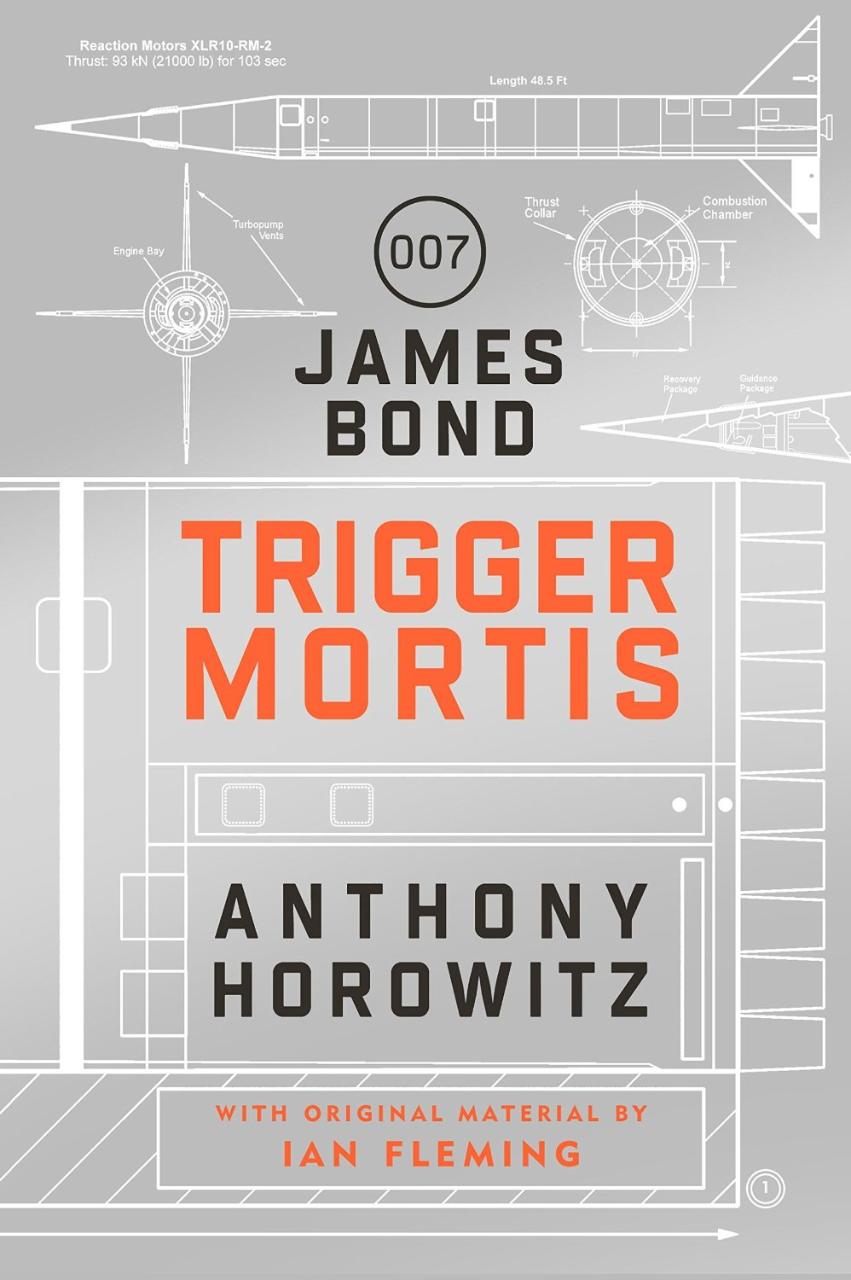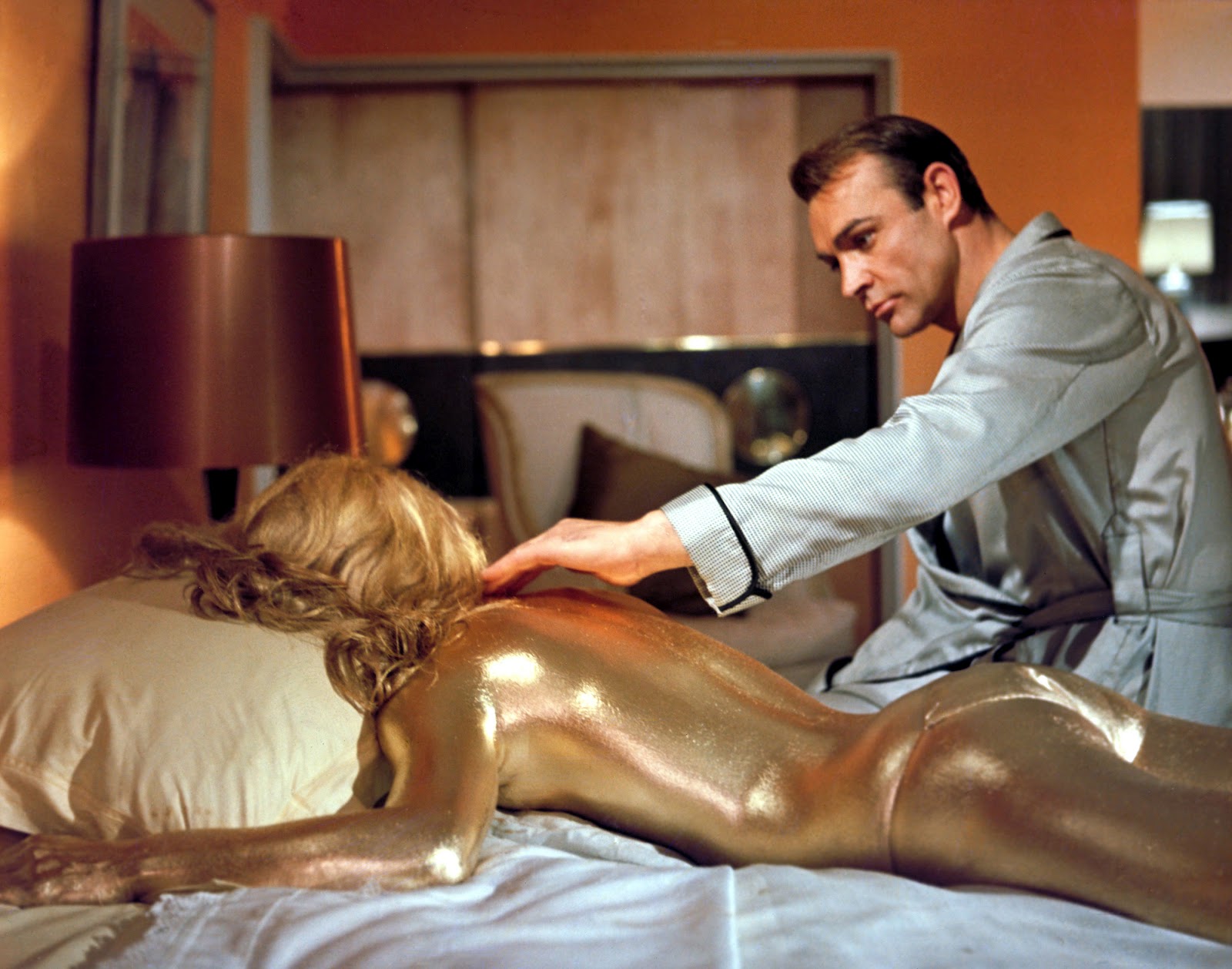If you’ve gone through Anthony Horowitz’s adaptation of Sherlock Holmes, you’d have witnessed a similarity between his and Sir Arthur Conan Doyle’s writing style. Having penned Trigger Mortis, Anthony Horowitz proves that he can get under the skin of any author, and not just Doyle’s. With a direct (and extremely confident) sequel to Goldfinger, the author has managed to resurrect James Bond as Ian Fleming imagined him in a very authentic and perfect Bond setting. Horowitz did base his premise on Fleming’s unpublished material (written for a TV spot), but that’s a mere 400-500 words worth of help, and the significant remainder is all of the Horowitz’s magic.

The fabulously titled book set in the late ’50s has James Bond resuming his relationship with Pussy Galore and his enmity with SMERSH. There’s a boom in technology, and every nation wants to outperform the other in this field. After having mapped out most of the Earth, the focus has now shifted towards space, and the country that first rules the space shall rule the world. This is the basic idea presented in the first few pages. There’s an upcoming supercar race coming up, and sources believe that in order to establish Russia’s technological supremacy, SMERSH may have plotted to kill a celebrated British racer on the devilish circuit, Nürburgring. Bond has to foil this plan one way or the other. Is SMERSH alone in this? In what would seem like heavy fanboyism, there’s also a Korean supervillain Jason Sin with an independant back-story of his own, the prime nemesis who intends to foil America’s rocket launch and whom Bond must outperform. And while we’re still at fanboyism, there’s also an instance where a lady is attacked, covered in gold paint and left to die.

While Horowitz’s Bond maintaining fidelity to Fleming’s character is great, his villain imitating most of Fleming’s villains is not that pleasing. Also, what lacked is the strong force of attraction between Bond and the new Bond girl – Jeopardy Lane. Both Sin and Lane lacked the strong intensity which we’re used to associating with their characters. Bond’s character has been slightly tweaked with conscience, making him stop before a killing to consider how many other lives shall suffer for the one life he’ll take. A little too deep for Bond, but it’s these appraisals that don’t let the book fall into the familiar territory.
If I had to find a cinematic equivalent of the stylish action described in the book, I can easily pin-point the recently released The Man From U.N.C.L.E, which coincidentally is set in the same period. The Nürburgring racing piece is brilliant and very Fleming-like, also the best of action in the book. Equally standing out is the climax action where Bond engages the bad guys in a train.
Fleming’s flair is not something that can be easily acquired, but Horowitz has put a sincere effort in reproducing it and in recreating a world we long feared was gone. Trigger Mortis is as close a Bond story ever written by anyone apart from Fleming, and definitely one of the more enjoyable and respectful ones.
Overall Rating : 3.5/5
You may purchase the book here –  and here –
and here – 

If you’ve gone through Anthony Horowitz’s adaptation of Sherlock Holmes, you’d have witnessed a similarity between his and Sir Arthur Conan Doyle’s writing style. Having penned Trigger Mortis, Anthony Horowitz proves that he can get under the skin of any author, and not just Doyle’s. With a direct (and extremely confident) sequel to Goldfinger, the author has managed to resurrect James Bond as Ian Fleming imagined him in a very authentic and perfect Bond setting. Horowitz did base his premise on Fleming’s unpublished material (written for a TV spot), but that’s a mere 400-500 words worth of help, and the significant remainder is all of the Horowitz’s magic.
The fabulously titled book set in the late ’50s has James Bond resuming his relationship with Pussy Galore and his enmity with SMERSH. There’s a boom in technology, and every nation wants to outperform the other in this field. After having mapped out most of the Earth, the focus has now shifted towards space, and the country that first rules the space shall rule the world. This is the basic idea presented in the first few pages. There’s an upcoming supercar race coming up, and sources believe that in order to establish Russia’s technological supremacy, SMERSH may have plotted to kill a celebrated British racer on the devilish circuit, Nürburgring. Bond has to foil this plan one way or the other. Is SMERSH alone in this? In what would seem like heavy fanboyism, there’s also a Korean supervillain Jason Sin with an independant back-story of his own, the prime nemesis who intends to foil America’s rocket launch and whom Bond must outperform. And while we’re still at fanboyism, there’s also an instance where a lady is attacked, covered in gold paint and left to die.
While Horowitz’s Bond maintaining fidelity to Fleming’s character is great, his villain imitating most of Fleming’s villains is not that pleasing. Also, what lacked is the strong force of attraction between Bond and the new Bond girl – Jeopardy Lane. Both Sin and Lane lacked the strong intensity which we’re used to associating with their characters. Bond’s character has been slightly tweaked with conscience, making him stop before a killing to consider how many other lives shall suffer for the one life he’ll take. A little too deep for Bond, but it’s these appraisals that don’t let the book fall into the familiar territory.
If I had to find a cinematic equivalent of the stylish action described in the book, I can easily pin-point the recently released The Man From U.N.C.L.E, which coincidentally is set in the same period. The Nürburgring racing piece is brilliant and very Fleming-like, also the best of action in the book. Equally standing out is the climax action where Bond engages the bad guys in a train.
Fleming’s flair is not something that can be easily acquired, but Horowitz has put a sincere effort in reproducing it and in recreating a world we long feared was gone. Trigger Mortis is as close a Bond story ever written by anyone apart from Fleming, and definitely one of the more enjoyable and respectful ones.
Overall Rating : 3.5/5
You may purchase the book here – and here –
and here – 
